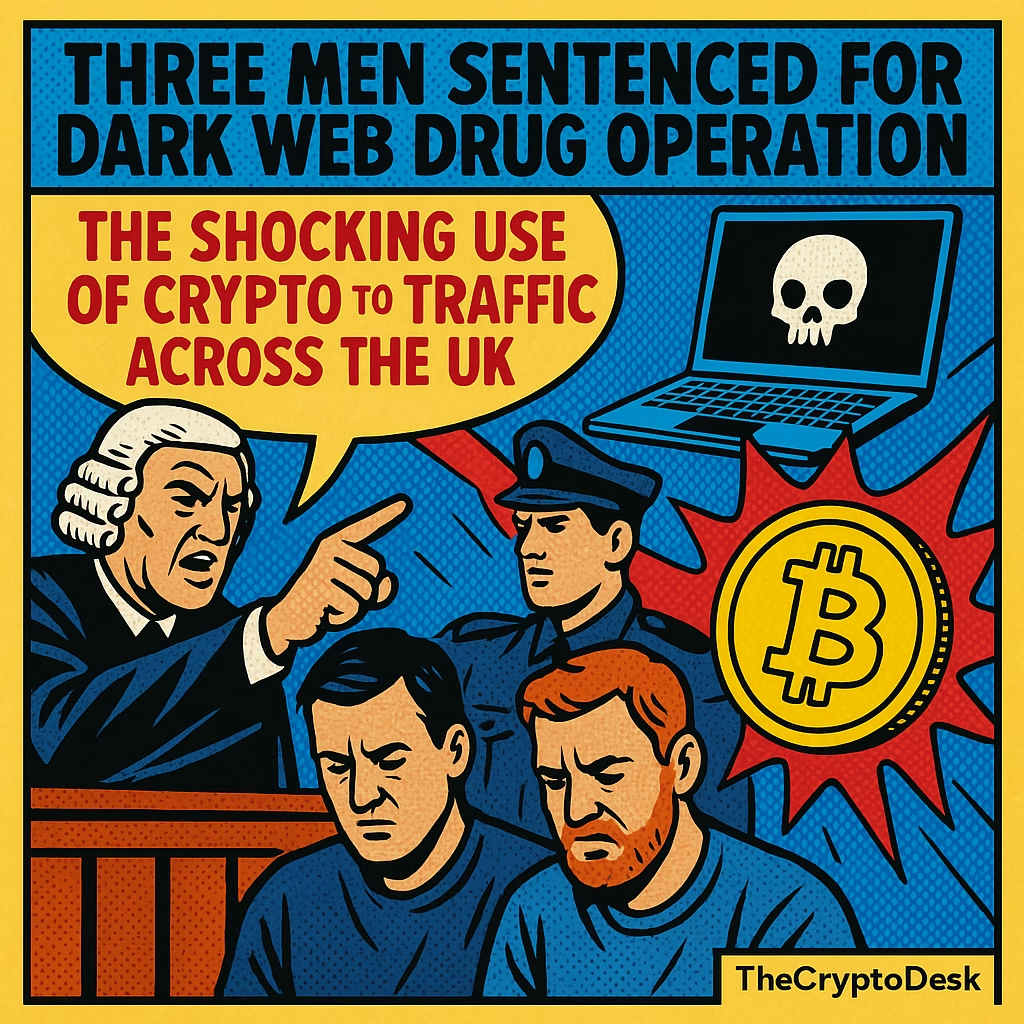In a groundbreaking case that demonstrates the ongoing cat-and-mouse game between law enforcement and criminals in the digital space, three men have been sentenced to prison for orchestrating a large-scale Class A drug operation in the UK. They utilized the dark web and cryptocurrency to conceal their identities and transactions. But as we’ll see, the veil of anonymity that criminals believed to be impenetrable can indeed be pierced with clever investigative techniques.
Why This Matters
As the world becomes increasingly digitized, the potential for misuse of technologies like cryptocurrency and the dark web continues to grow. However, the recent arrests underscore an important reality: even in the seemingly anonymous realms of the internet, skilled investigators can track down illicit activities. The implications of this case extend far beyond mere law enforcement; it serves as a crucial warning to those contemplating similar paths.
Malcolm Magala, aged 37 and hailing from Portsmouth, was the mastermind behind this operation. Under the guise of a pseudonymous online persona, he had been selling heroin and crack cocaine on multiple dark web marketplaces since 2020. Not operating alone, he recruited two accomplices, Alain Kirunda-Nsiiro, 39, and Jerome Omard, 44, both from Waltham Forest, London. Their role involved the critical tasks of packaging and distributing the drugs, often using a local Post Office in Walthamstow to ship their products.
Unmasking the Criminals
The breakthrough for law enforcement came from the work of the South East Regional Organised Crime Unit (SEROCU), which began tracking the group after identifying suspicious cryptocurrency transactions linked to drug sales. The digital footprints left behind served as breadcrumbs, leading investigators straight to the core of the operation.
In a dramatic turn of events in July 2022, officers intercepted Omard on his way to mail several drug parcels, ultimately discovering 138 grams of heroin cleverly concealed within a music speaker. A follow-up search at his residence unveiled a trove of additional narcotics. On the same day, Magala was apprehended, found in possession of £3,150 in cryptocurrency along with various crypto hardware devices. A further search of his home revealed not only drugs but also a pill press and small quantities of tablets, painting a grim picture of organized drug production.
Days later, Kirunda-Nsiiro was also arrested once investigators linked him to the operational framework. At Reading Crown Court, the trio faced justice: Magala received a sentence of 11 years and three months after pleading guilty to conspiracy charges involving cocaine and heroin supply, while Omard was sentenced to four years and six months. Kirunda-Nsiiro faced a lengthier sentence of 12 years following a two-week trial.
Detective Inspector Rob Bryant characterized this case as a complex blend of digital detective work and traditional investigation methods. He stated, “I hope this shows criminals that their activities on the dark web are detectable.” Indeed, the collaborative efforts between blockchain tracing and law enforcement are proving to be robust tools in the ongoing fight against digital crime.
Expert Opinions
Experts in cybercrime, such as those from cybersecurity firms and law enforcement agencies, continue to highlight that the tools provided by blockchain technology can effectively be used both to obscure identities and, ironically, to track illicit operations. With the evolution of digital currencies, the ability to trace transactions is becoming increasingly sophisticated. This duality calls for constant vigilance and adaptation from both criminals and the authorities aiming to counteract their activities.
Future Outlook
As we look ahead, the future of drug enforcement in an era of technological advancement seems promising yet challenging. Authorities are likely to sharpen their skills in digital forensics while developing strategies to stay ahead of evolving criminal tactics. This case demonstrates a model of success that can be replicated in various forms of organized crime, indicating that although the dark web presents an opportunity for anonymity, it is not insurmountable.

In related news, the cryptocurrency sector still grapples with its own issues, as evidenced by recent reports of cyber-related hacks resulting in massive financial losses. For instance, a recent report from blockchain security firm PeckShield stated that September alone saw approximately $127.06 million lost due to crypto hacks, marking a 22% decrease from August’s figures. Despite this decline, the scale and frequency of attacks underscore the vulnerability of DeFi and blockchain platforms. Their ongoing challenges remind us that the digital landscape is fraught with risk on all sides.
#PeckShieldAlert September 2025 saw ~20 major crypto exploits, resulting in total losses of $127.06M.This marks a -22% decrease from August’s $163M.In a positive development, ~$13M drained from a Venus user in a #phishing attack has been recovered.Top 5 Hacks:🔺 #UXLINK –… pic.twitter.com/ebUYM3Xwnh— PeckShieldAlert (@PeckShieldAlert) October 2, 2025
As these stories unfold, they remind us of the complex and ever-evolving interplay between technology, law enforcement, and those who seek to exploit it for nefarious purposes. It’s a reminder that staying informed about the digital age isn’t just smart—it’s necessary. Keep an eye on this space as we continue to track developments in the world of cryptocurrency and cybercrime!
Feeling motivated to stay ahead of the curve? Engage with us by sharing your thoughts on how you think law enforcement should approach the dark web!
